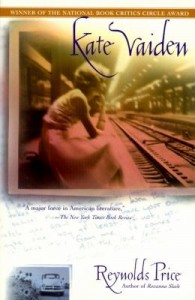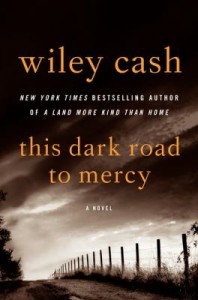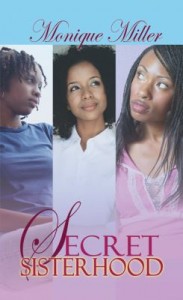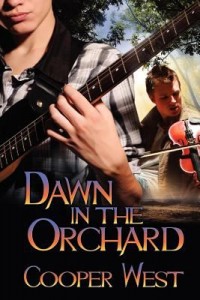When it comes to romance, Nicholas Sparks has made a name for North Carolina. Although not a native North Carolinian (he hails from Omaha, Nebraska) Sparks’s geographical obsession with the state has become a hallmark of his writing. In all, Sparks has authored seventeen novels and one autobiographical travelogue. All but the travelogue are set in various locations around North Carolina. Sparks is often very active and hands-on in the process of adapting his novels for the big screen. As of now, eight of Sparks’s novels have been made into films and the ninth and tenth are on the way. Three of the eight adapted novels have been blogged on here in the past: The Lucky One (2008), The Last Song (2009), and Safe Haven (2010), so we’ll focus on those. His five earlier adapted novels: The Notebook (1996), Message in a Bottle (1998), A Walk to Remember (1999), Nights in Rodanthe (2002), and Dear John (2006) haven’t been covered on the blog, at least not just yet.
Chronologically, Sparks wrote The Lucky One before the The Last Song, but the film based upon the later was released first. The Last Song (book released 2009, movie released 2010) is a bit of an anomaly in that formulating the screenplay for the film inspired Sparks to create a corresponding novel.
The idea for the novel came about when Miley Cyrus, at the time primarily known for her starring role in Disney’s Hannah Montana, was searching for newer, more mature work. Cyrus met with Sparks and he devised an idea based on her interest. His story focuses on a daughter and father healing their estranged relationship. A budding romance between the daughter and a privileged local boy and loggerhead sea turtles appear heavily in the sidelines. The Last Song was a slight departure from his other works as the characters were teenaged and most of his works featured adult and middle-aged characters.
Although Sparks stuck to his customary North Carolina setting (Wilmington) for the novelization of The Last Song, the film was relocated to Georgia and shot on Tybee Island and in Savannah. North Carolina vied against Georgia during the selection process. Ultimately, Disney selected Georgia over North Carolina on the basis of film tax incentives. Losing a deal with Disney and The Last Song was an especially hard blow since Sparks’s last adaptation, Dear John, was also filmed outside of North Carolina. Reviews of the film were mixed, though Miley Cyrus’ performance was praised — see an enthusiastic review of her acting by Roger Ebert here.
By contrast, The Lucky One and Safe Haven featured romances between attractive twenty-and-thirty-somethings. The Lucky One (novel released in 2008, film released in 2012) starred another Disney teen sensation, Zac Efron and Taylor Schilling. Like Cyrus, The Lucky One was one of Efron’s gateway roles as an adult actor. The plot follows a Marine, who during his third tour in Iraq, finds a photo of a mystery blonde woman that becomes his lucky charm. After his return to the US, the Marine searches for his lucky Jane Doe. Again, the setting was the defining change for the adaptation. The movie was set and filmed in Louisiana as a result of film tax incentives. Sparks seemed unconcerned about the geographical shift. In a quote from Nola.com, website of The Times-Picayune, Sparks explains that he aims for his novels to feel interchangeable and relatable: “I try to write stories that feel like they could happen anywhere…And that’s what I’m trying to do, too, is write a universal story that people will really enjoy.” Audiences enjoyed The Lucky One while critics were split.
Safe Haven (novel released in 2010, film released in 2013) tells the tale of another mystery woman, who quietly moves into the small, coastal city of Southport. She doesn’t mean to fall in love, but she can’t escape the attentions of a handsome widower with two children. Once she gets to know him, she can’t help but to fall in love. Unlike the other two films, Safe Haven was filmed entirely on location in Southport and Wilmington. IndyWeek notes that the movie is only the third of Sparks’ eight adaptations to be shot exclusively in-state. The other two films were A Walk to Remember (2002) and Nights in Rodanthe (2008). Yet again, the critical response was mixed. Roger Ebert issued a much harsher review compared to his review of The Lucky One, based on his visceral response to Safe Haven’s surprise ending. Despite critics’ response to Safe Haven, it was a success with audiences again. Clearly the divide between critics and audience is a pattern with Sparks’ book-to-movie adaptations.

Screen capture from Box Office Mojo site representing the box office sales of Nicholas Sparks film adaptations.
While critics might not universally laud his films, audience-goers buy the tickets. All three films were box office successes. Sparks has cracked the secret to commercial success, now only if North Carolina could figure out a way to keep his adaptations in-state. The Best of Me stars James Marsden (who replaced the late Paul Walker) and Michelle Monaghan. Filming is underway in Louisiana. His latest novel, The Longest Ride, is in pre-production and it was recently announced that Clint Eastwood’s son, Scott Eastwood will play one of the lead roles. Here’s to hoping that movie will be filmed locally in NC.
Read the original blog posts on The Last Song, The Lucky One, and Safe Haven. The novel and film for The Lucky One are available through the UNC-Chapel Hill Library catalog. Currently, only the novels for The Last Song and Safe Haven are available. Both films are available through the Chapel Hill Public Library though.
Sources consulted:
Box Office Mojo, Forbes, Hollywood Reporter {two articles}, IMDb {Miley Cyrus, Zac Efron, Nicholas Sparks, The Last Song, The Lucky One, Safe Haven, The Best of Me, The Longest Ride, Message in a Bottle, A Walk to Remember, IndyWeek, Movie Clips, New York Times, News & Observer {two articles}, Nicholas Sparks, Nola, Relativity Media/iamROGUE, Roger Ebert {The Last Song, The Lucky One, Safe Haven}, Touchstone Pictures, Variety, Vox, Vulture, Wikipedia {Nicholas Sparks, The Last Song – novel and film, The Lucky One – novel and film, Safe Haven – novel and film}










